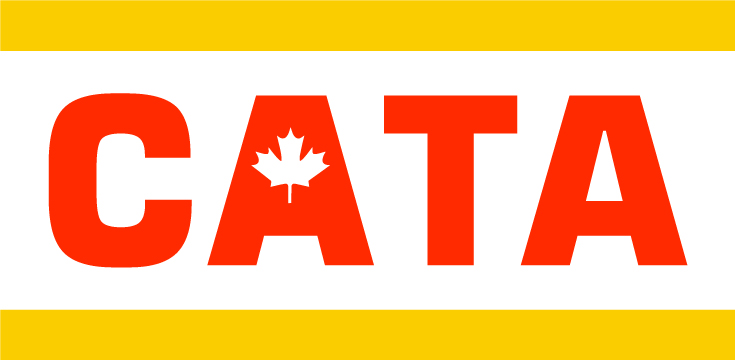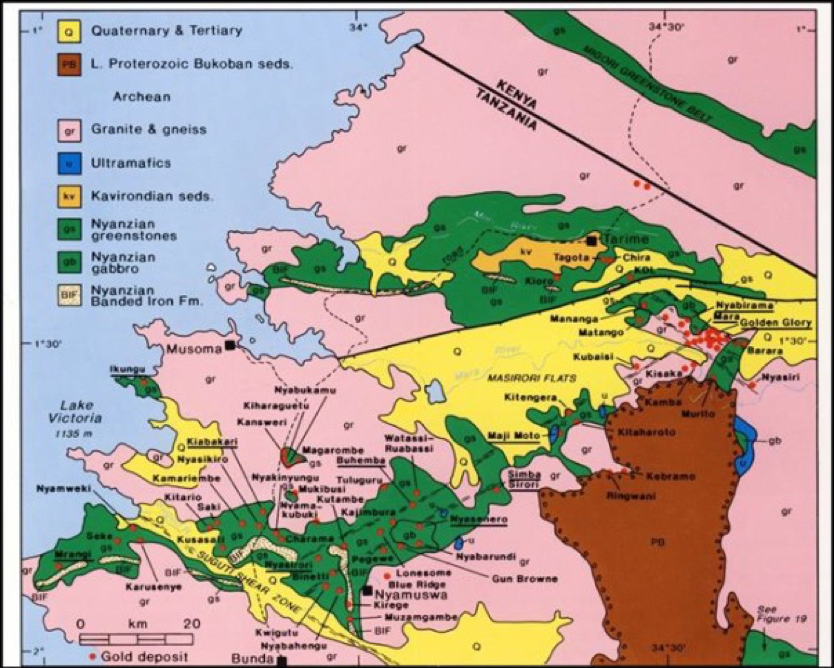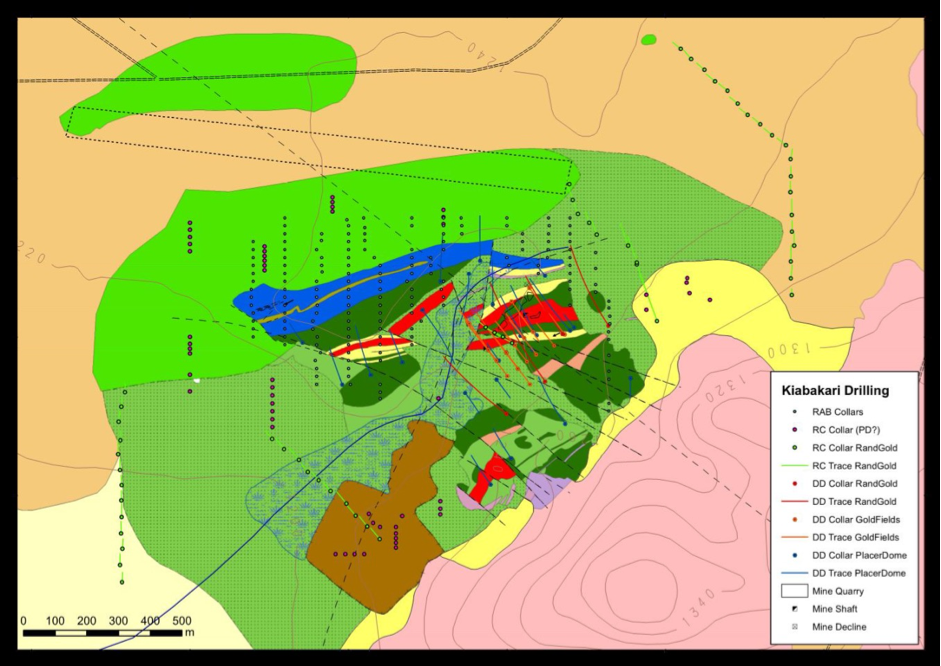PROJECTS
Kiabakari
The Kiabakari Mine is located in the Musoma-Mara greenstone belt, Northern Tanzania, some 30km south of Musoma (Fig. 1). The Musoma-Mara greenstone belt comprises a broad band of meta-volcanic and meta-sedimentary rocks up to 30 km wide wrapped around an east-west trending fold axis. The Musoma-Mara greenstone belt is cut by two major ESE-trending shear zones, the Mara shear zone in the north and the Suguti shear zone in the south. Several ENE-trending subsidiary shears also cut the belt. The Musoma-Mara greenstone belt also hosts numerous gold deposits including the North Mara Gold Mine owned by Twiga Minerals Corporation, a joint venture between Barrick Gold and the Government of Tanzania.
Mine Geology
Mine stratigraphy comprises from north to south, an E-W striking, sub-vertical sequence of Footwall Meta-basalt, Graphitic Schist, Mylonite Shear Zone, Mine Meta-Gabbro, Hanging-wall Meta-basalt, Interflow Meta-sediments and late granites. The metamorphic grade is upper greenschist to lower amphibolite. Mineralization transgresses lithological boundaries and appears to be structurally controlled, related to ENE trending shears (Fig. 2).
Mineralization is confined to steeply plunging orebodies formed where the axial plane of a subvertical fold closure cuts an intrusive gabbro. This axial plane was later reactivated as a sinistral shear zone. The Mine is hosted by amphibolite-sericite schists with bodies of siliceous albitite representing meta-gabbro. Disseminated sulphides are present in small amounts (<7%) and include pyrite and pyrrhotite with minor arsenopyrite, varying in proportion from orebody to orebody.
Gold mineralization appears to be related to lithology (gabbro), structural deformation (highly sheared rock), sulphide type (pyrite>pyrrhotite) and intensity (more pyrite & pyrrhotite). The gold is generally free and is recoverable by cyanidation without roasting or flotation. Various ore bodies are currently being mined through open cast operations.
Resources
Historical resource assessments have focussed on the main orebody, but as CATA Mining has progressively explored the pit, subsurface and near mine region, a number of additional discoveries have been made. The significance of these results is being captured in a new report being prepared in accordance with the strict international requirements of the JORC Code (2012) applied. This is used to define the volume, tonnages and grades of various orebodies which will be mined during the short and medium terms, and as a basis for the long term exploitation of a generational resource.

Investors
CORPORATE
Contact
CATA Mining Company Limited, Musoma Katario Hill, Kiabakari Ward, Butiama District, Mara Region, Tanzania
Privacy Policy
Copyright CATA Mining 2022.

